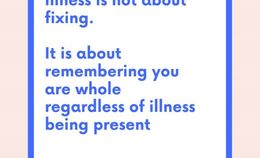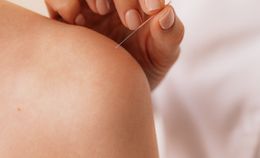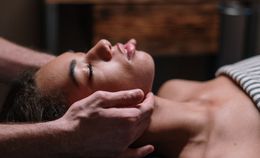Many people first try foot massage as a treat for tired, aching feet. But foot pain isn't the only reason to get a foot massage!
Foot massage and reflexology - a specialized kind of manual therapy applied to the feet that originates in traditional Chinese medicine - both offer a multitude of health and wellness benefits.
And if you're new to massage and bodywork, both can be a great way to dip your toe into these practices. Reflexology and foot massage treatments are often available on a walk-in basis, can be very affordable, and do not require the client to disrobe (aside from removing socks and shoes). These services are frequently provided in a communal setting with numerous practitioners and clients.
For these reasons, foot massage and reflexology can be a less-intimidating entrance point to the experience of massage and bodywork services. And it doesn't hurt that a good foot rub is a near-universal pleasure.
Read on to learn more about what to expect at your first foot massage or reflexology session, the different massage techniques and treatments available, and the benefits you're likely to experience from each type of practice.
Reflexology vs. foot massage: what's the difference?
Reflexology is a very popular type of manual treatment for the feet and is similar to massage in some ways, so it's common for people to use the terms interchangeably. The Reflexology Association of America asserts the importance of distinguishing between massage and reflexology.1
However, in common usage, "foot massage" is best seen as a more general term that can describe many manual techniques applied to the feet, whereas "reflexology" is a specific practice with a distinct history, theory, and method of application.
Reflexology involves applying healing touch to the hands, feet, and ears. In foot reflexology, different parts of the foot (called reflex zones or pressure points) are believed to correspond to various systems throughout the body. The reflexologist applies pressure to various reflex zones of the foot in order to stimulate the central nervous system and affect energy pathways, thereby promoting healing and relaxation throughout the body.2
While foot reflexology may be the most popular form of manual therapy applied to the feet, there are other forms originating in or incorporating a variety of massage modalities. A foot massage not based in reflexology may include elements of Swedish massage, Shiatsu, Thai massage, and other traditions.
What to expect during a foot massage or reflexology session
In both foot massage and foot reflexology, the client will be asked to remove their socks and shoes. They may be asked to soak their feet in warm water. The therapist may use massage oil or lotion, and specialized tools like dowels or balls.
A reflexologist may ask the client about any physical ailments they are experiencing in order to target the related reflex zones in the feet. Some foot reflexology sessions may incorporate treatment of the hands and ears and include massage to the whole body, while some may focus entirely on the feet. 3
A non-reflexology foot massage is likely to focus more specifically on treatment of the feet, although this too can have positive impacts throughout the body.
Because there is a good deal of variety in the types of services offered under the banner of a "foot massage", don't hesitate to ask exactly what you can expect and what is included. Feel free to share any preferences with your massage therapist or reflexologist as well.
Health benefits
A non-reflexology foot massage involves applying various massage techniques to the feet with the same goals as massage when practiced anywhere on the body: improved circulation, release of muscle tension, relaxation, stress relief, and pain relief.
Like massage generally, foot massages can help relieve pain and tension in other parts of the body, since releasing trigger points and tension in one location often has a cascading effect. Foot massage can help relieve headaches and back pain, swelling of feet and ankles during pregnancy (edema), promote mental health, facilitate sleep, and provide an overall sense of calm and well-being.4
Reflexology can have many of the same benefits, and also provides more targeted healing of different body systems through restored energy flows. This, in turn, lowers blood pressure and alleviating both psychological and physical pain associated with health conditions like cancer treatment, type 2 diabetes, and multiple sclerosis.5
Conclusion
Foot massage and reflexology are popular and useful methods to reduce stress, relieve pain, and promote overall health and well-being - along with soothing localized foot pain and muscle tension. They can also be a wonderful entry point to other types of massage and bodywork, and are a pleasurable experience for nearly everyone who experiences them.
For these reasons, foot massage and reflexology are well worth exploring, and many people find these practices a helpful and enjoyable addition to their regular wellness routines.
References:
1 "Reflexology is Not Massage": https://reflexology-usa.org/reflexology-is-not-massage/
2 "What is Reflexology": http://www.reflexology-research.com/?page_id=151
3 "What is Reflexology? It's more than just a foot massage!": https://www.spafinder.com/blog/healing/reflexology-101-treatment-benefits/
4 "Top 10 Health Benefits of Foot Massage and Reflexology": https://renaissancecollege.edu/top-10-health-benefits-foot-massage/
5 "What Does the Research Say About Reflexology": https://www.takingcharge.csh.umn.edu/explore-healing-practices/reflexology/what-does-research-say-about-refloxology





















